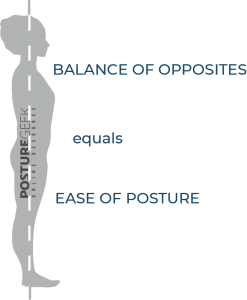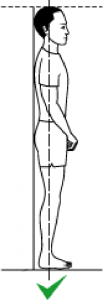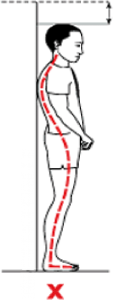Our search for "Perfect" Standing Posture
You’ve seen it before – someone who has perfect posture. Standing tall and straight, with head held high as if on display for all to see.
But what do you want your body to look like? Is it standing or sitting straight-backed, eyes focused ahead, and spine aligned naturally with shoulders pulled back in an upright position?
Maintaining this kind of ideal without even thinking about it can be tough and let’s face it – we don’t always have time for that. Or, even need it! But how can we find our way towards achieving these perfection types (especially since there are so many different ways)?
The answer lies somewhere between:
- “Natural” posing, which relies on muscle memory alone, and
- Mindful positioning where movement throughout each day becomes consciously calculated according to what circumstances require but always working towards Perfect Standing Posture.
Posture cannot be considered as a single act or position, but a unique moment in time that captures only one possible postural position.
Posture Geek Tweet
What's happening to my posture?

Posture is the balance of muscles of the front and back of the body. When this equilibrium changes due to habit, accident, or injury, you should be aware that postural disorders may occur.
However, we can still maintain “good” posture by correcting any problems before they get worse or staying consistent through habitually correcting any changes.
The process of finding your personal “ideal” posture can start with one simple change. The right way to stand is a beginning, not an end, because many factors go into good posture. We want all those elements working together for us.
Used as a benchmark, we begin the assessment process, allowing changes discovered to be a first step towards finding any movement towards or away from our ‘ideal’ posture.
“Proper posture is believed to be the state of musculoskeletal balance that involves a minimal amount of stress and strain on the body” (Yip et al, 2008, p. 148)
- Start by bringing your pelvis to rest above your feet. Not too far forward, nor too far back…but just on top. Can you notice any tension or discomfort above or below the pelvis?
- What does this do to your shoulders and neck? Are they resting any easier? Or, are you beginning to feel discomfort in other areas around your shoulders…in your chest? Your neck? Your arms, maybe?
- Consider what your head is now doing? Is it placed comfortably on your shoulders, or does it rest too far forward, creating extra strain on the neck?
While this may be a simplified description, the underlying principle remains – to improve your posture, you must look at what your whole body is doing.
Every moment of the day our bodies are making changes to our posture.
Posture Geek Tweet
Exploring Good Posture
Healthy posture represents a state in which all major body segments are balanced and centered atop each other – requiring minimal muscle use and energy expenditure.
With all segments of the body aligned, our joints, muscles, and tendons will experience less wear and tear, with resultant ease of movement and an increased ability to produce our daily activities.
Poor Posture Considerations
Poor posture can be considered to be the movement away from an ‘ideal’ posture.
The short-term movement away from ‘ideal’ posture may not have any resultant long-term impacts on health and wellbeing.
However, prolonged poor posture results in excessive stress and strain upon the body, – resulting in a decrease in function and an increased risk of injury, or associated issues such as with your breathing.
We all require a balanced posture if we wish to maintain long term health and wellbeing.
Posture Geek Tweet
Finally
The search for perfect posture may not be possible for all, but it’s a goal worth working towards. We each have our own unique body type and characteristics, so we need to find what works best with those features – allowing room for all possible variations to unfold.
PLEASE NOTE
This is for informational purposes only. You should always consult with your health care provider for professional assistance.


